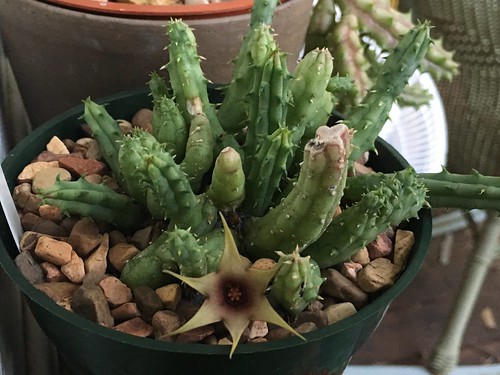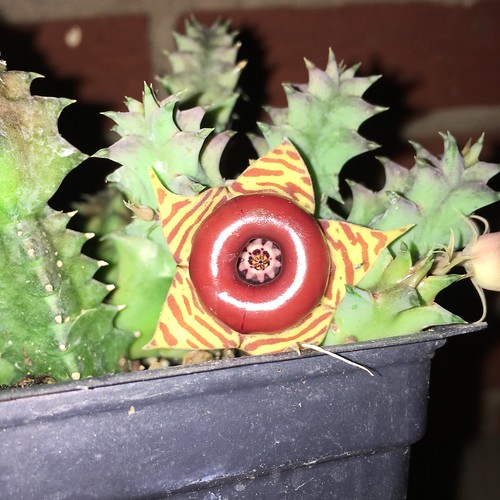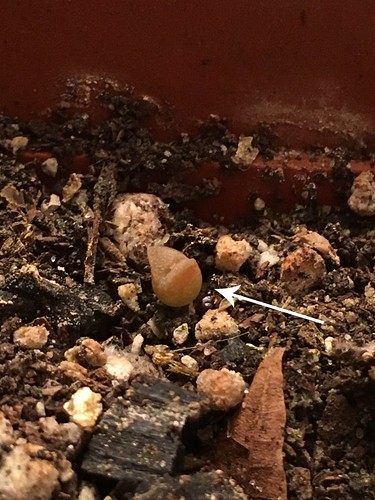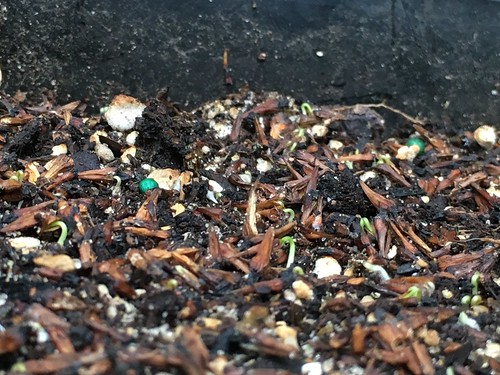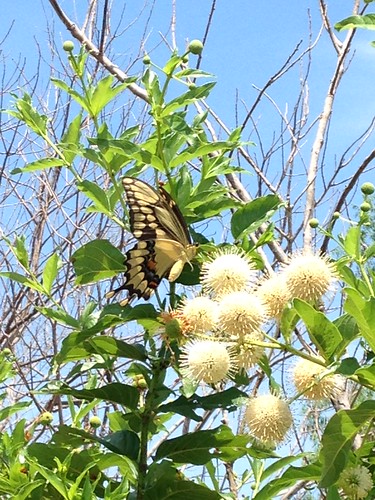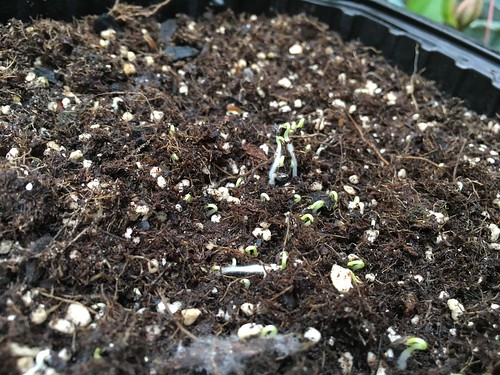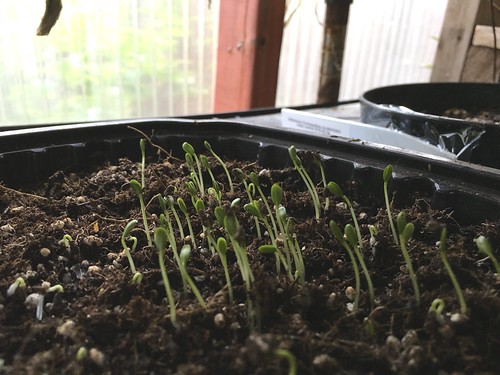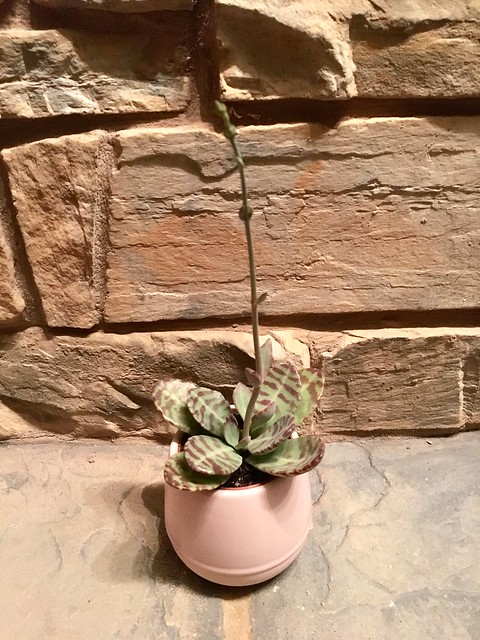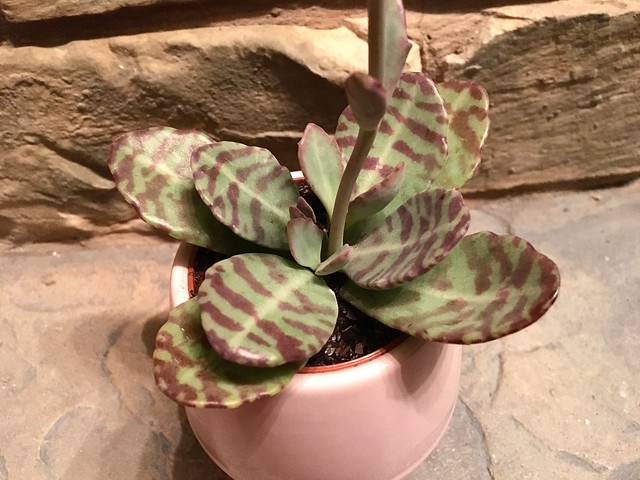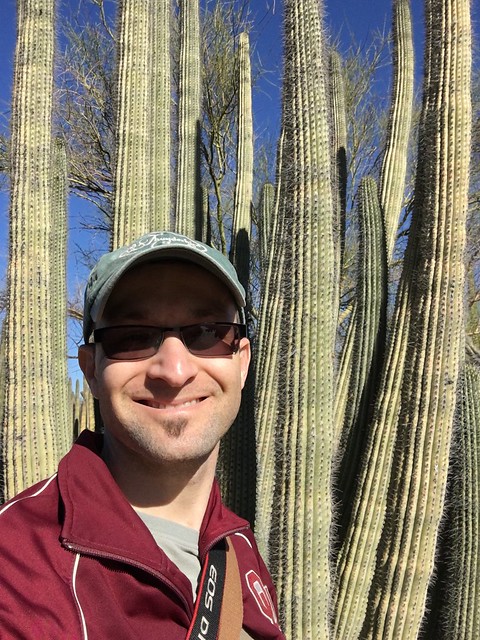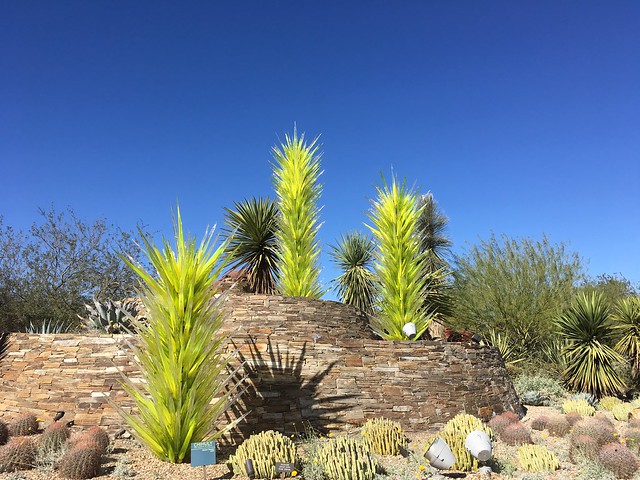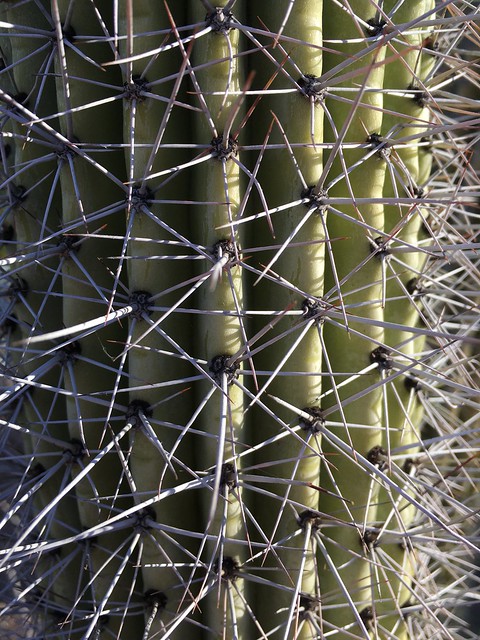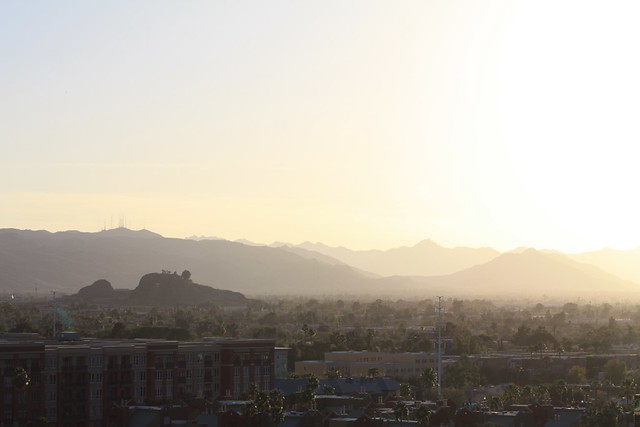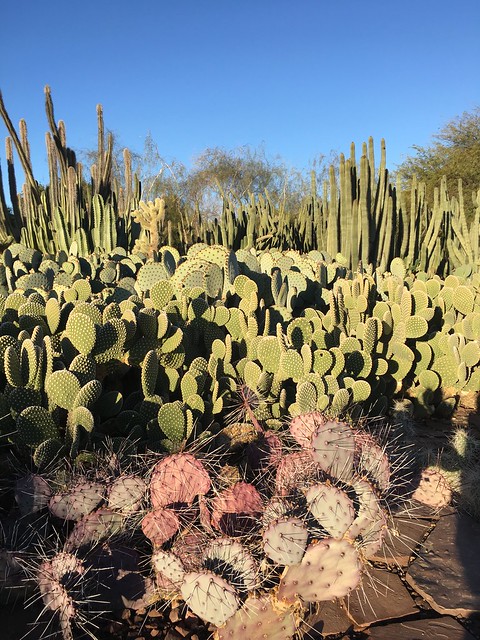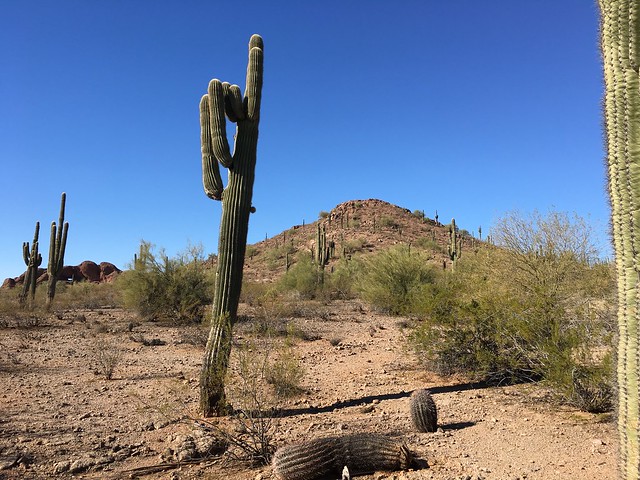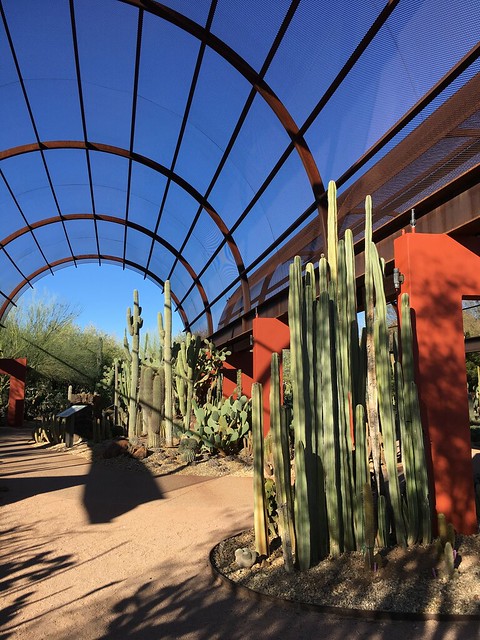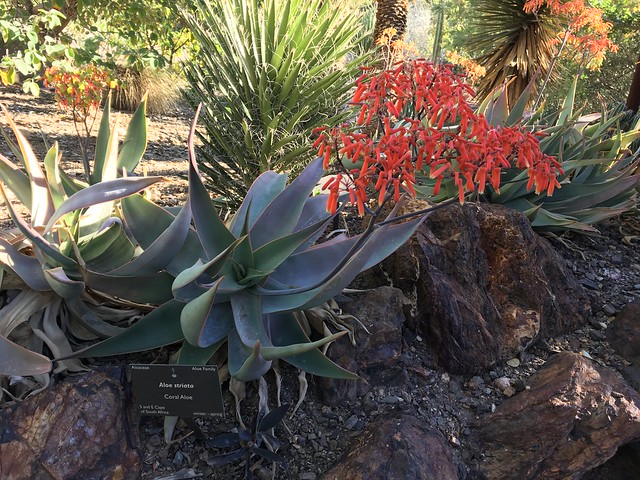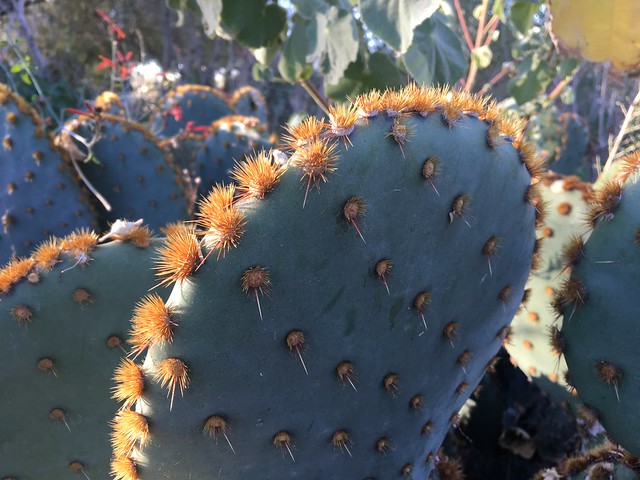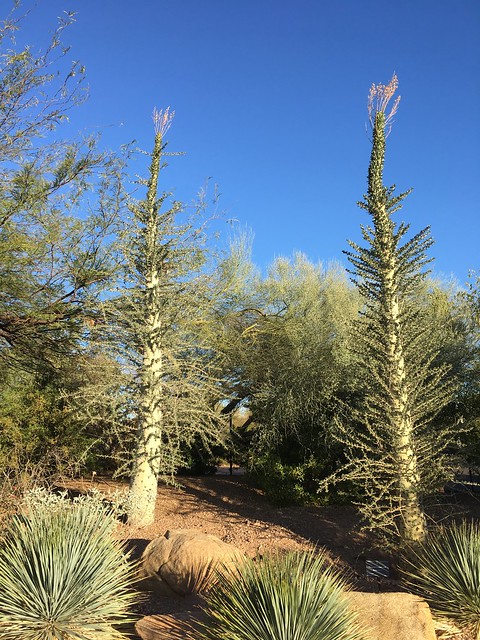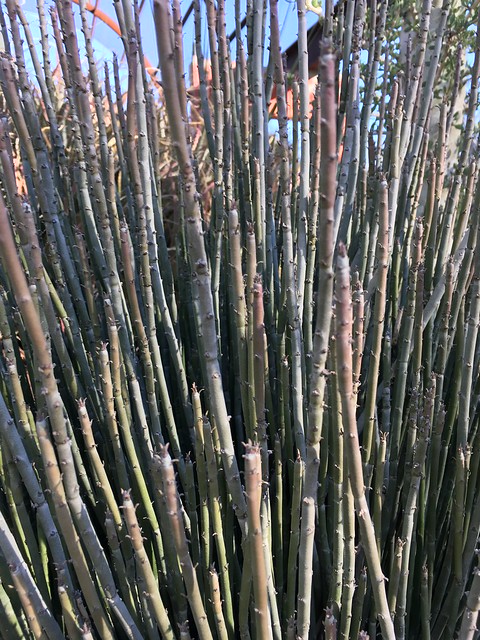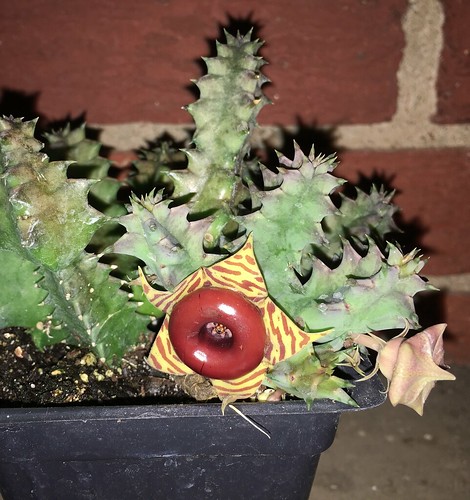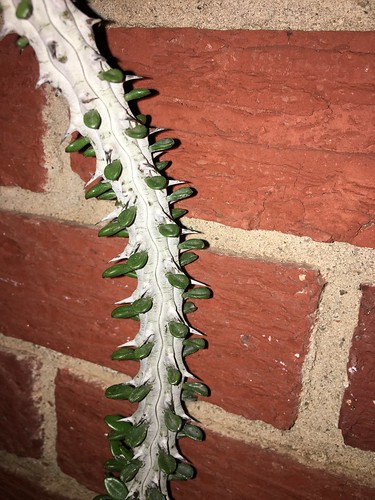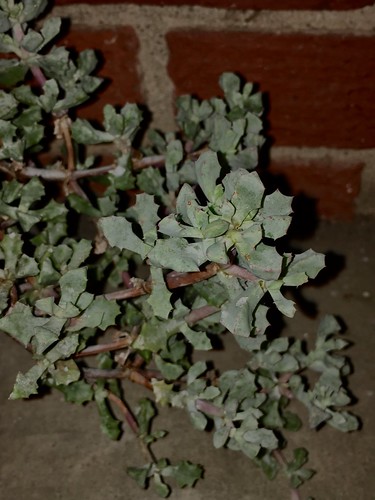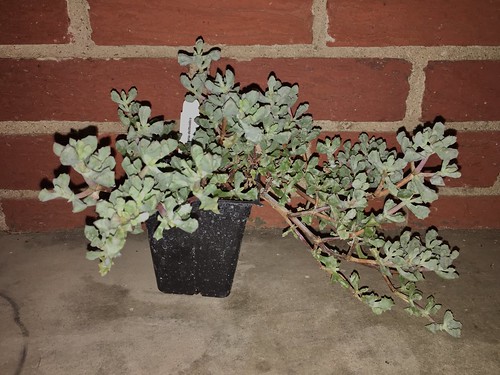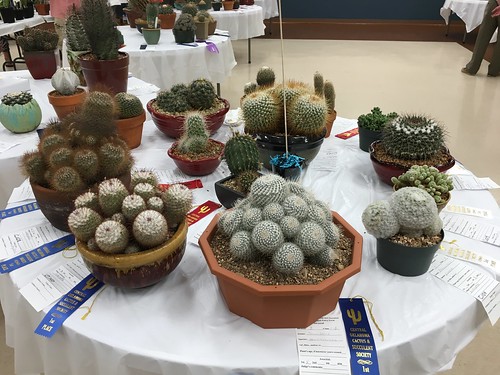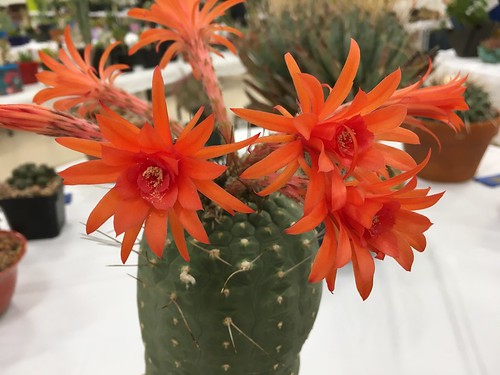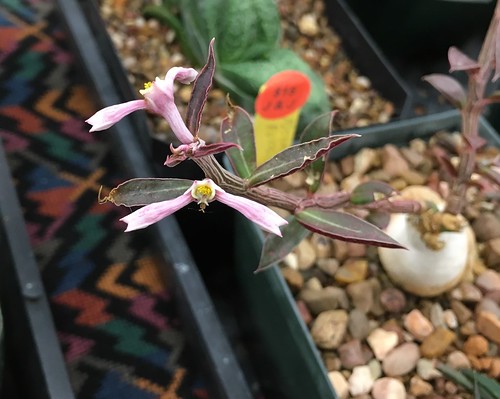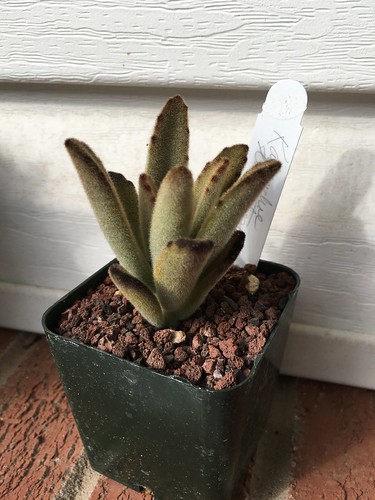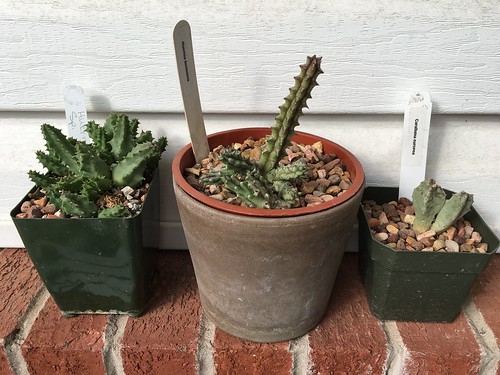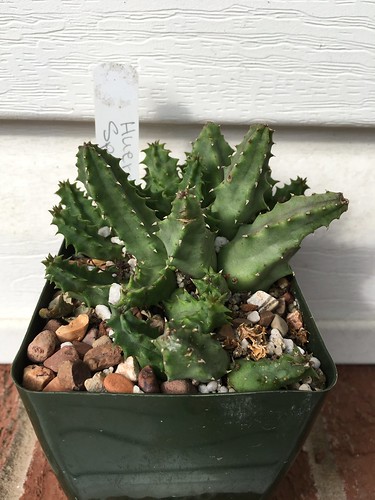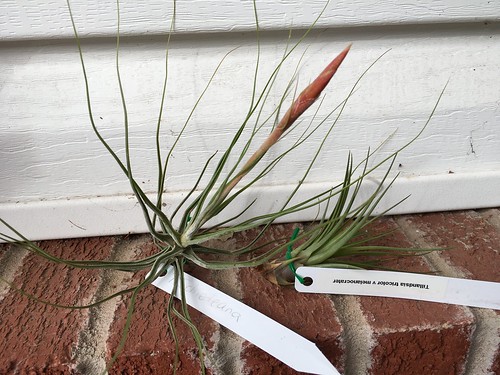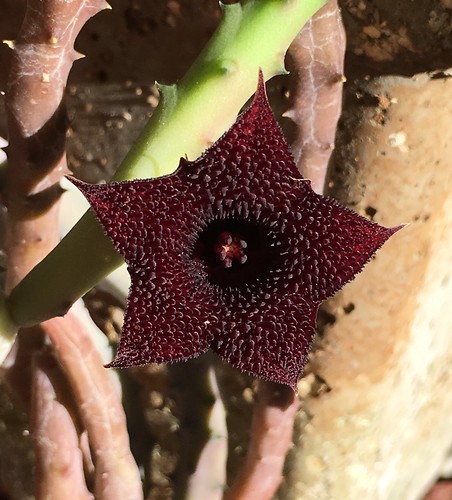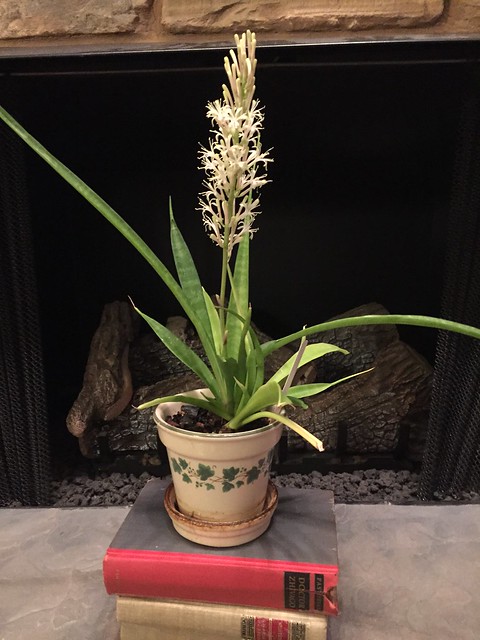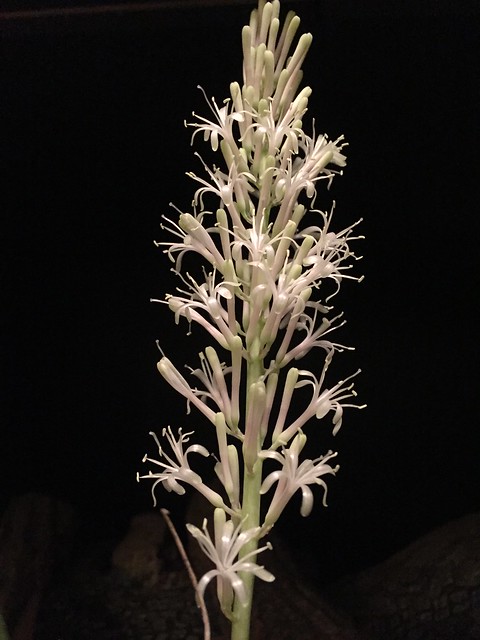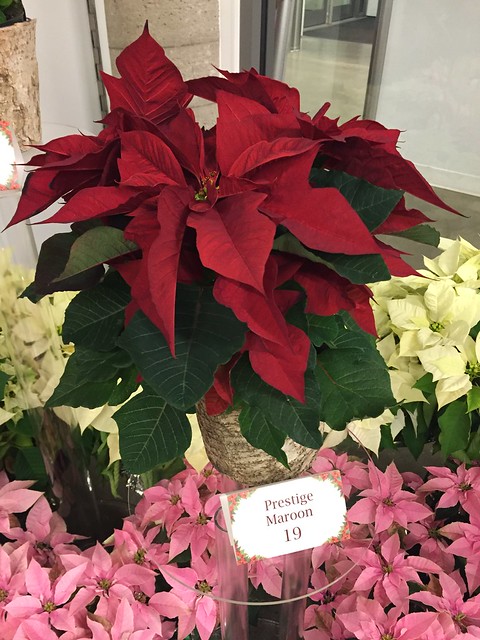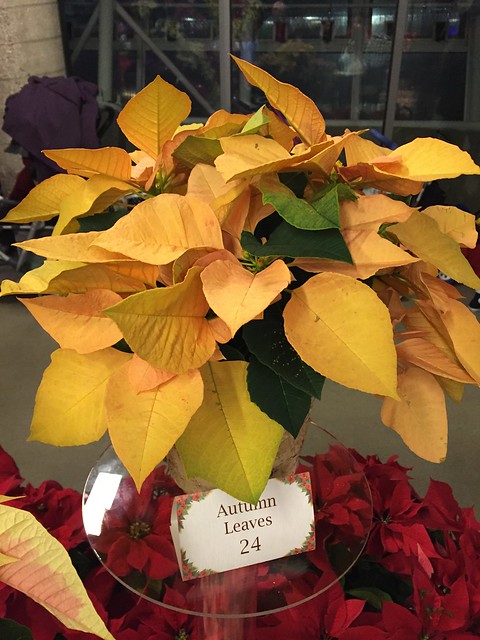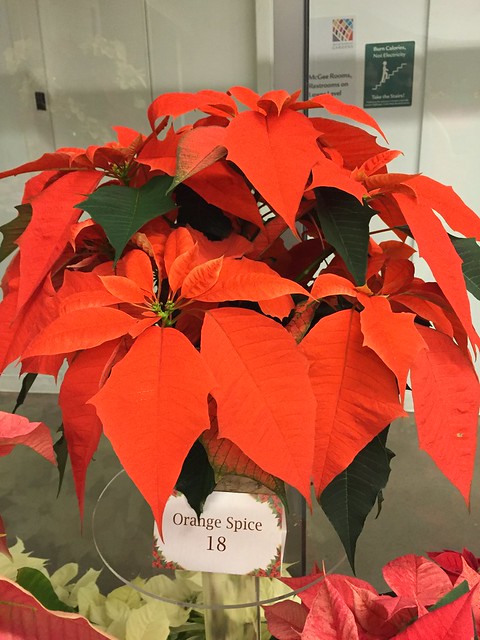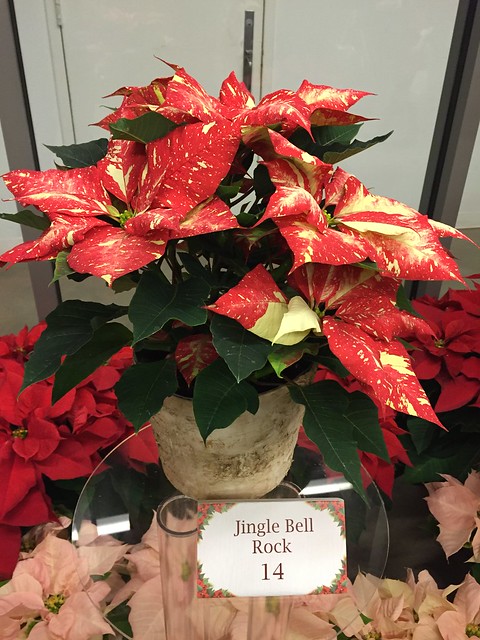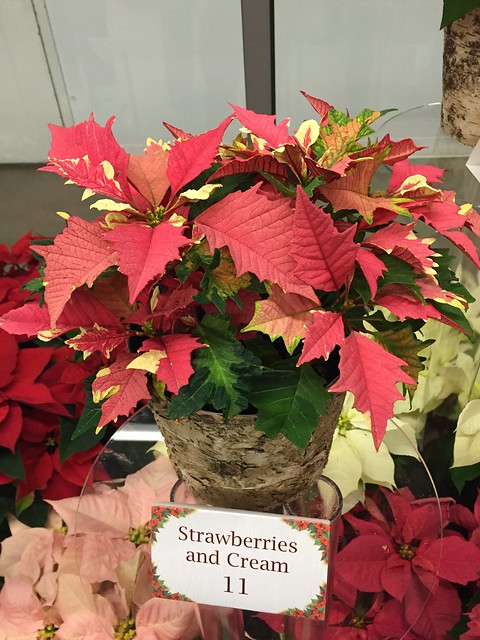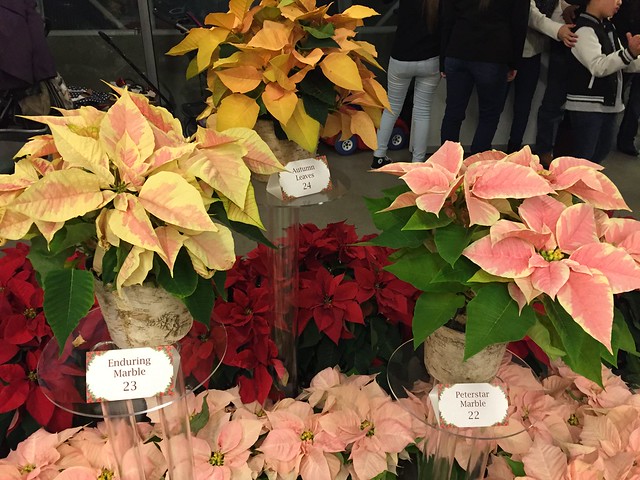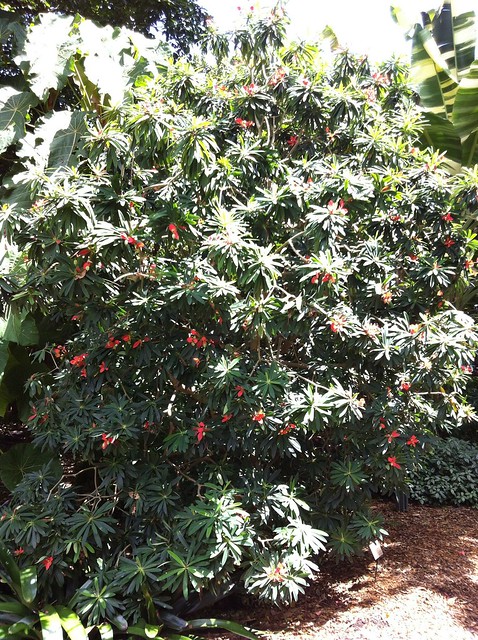 |
| Many of my Encyclia orchids are kept together on this top shelf for the brightest light. |
 |
| Another top shelf is filled with cacti and succulents. |
Over the years some plants have been neglected. Some plants get over-watered or under-watered, depending on where they are located and how they are potted. Over the last month I have done the most comprehensive greenhouse cleanup since I first built it. I didn't quite take everything out, but I did go through all 7 shelving units and remove empty pots, sweep out all the leaves from the floor, remove all the junk that was being stored under benches, and repotted plants that were in need of new soil or more space.
It was a big undertaking, but I'm really glad I took this on before moving all my plants back into the greenhouse for the winter. Probably a third to half of my plants come out of the greenhouse for the warm part of the year, but have to move back in during the winter to survive our cold weather.
 |
| Wide-angle view to show most of the greenhouse at once. |
It's this time of year when I start worrying that I won't be able to fit everything in. This year I think there might be enough room to get my plants in and still have a spot for me to stand to water things. That would be a big win!
 |
| This mid-level shelf is more shaded and has tender new seedlings and other plants I need to keep a close eye on over the winter. |
During the winter the heater will really dry out the air in the greenhouse, so it's important that I keep a close eye on plants that are sensitive to dry conditions. For this reason I've tried to position some of these plants in positions where I they are front and center when I walk in the greenhouse.
Here's to hoping that the plants are happy over the winter and next spring I have lots of plants to share with friends!




